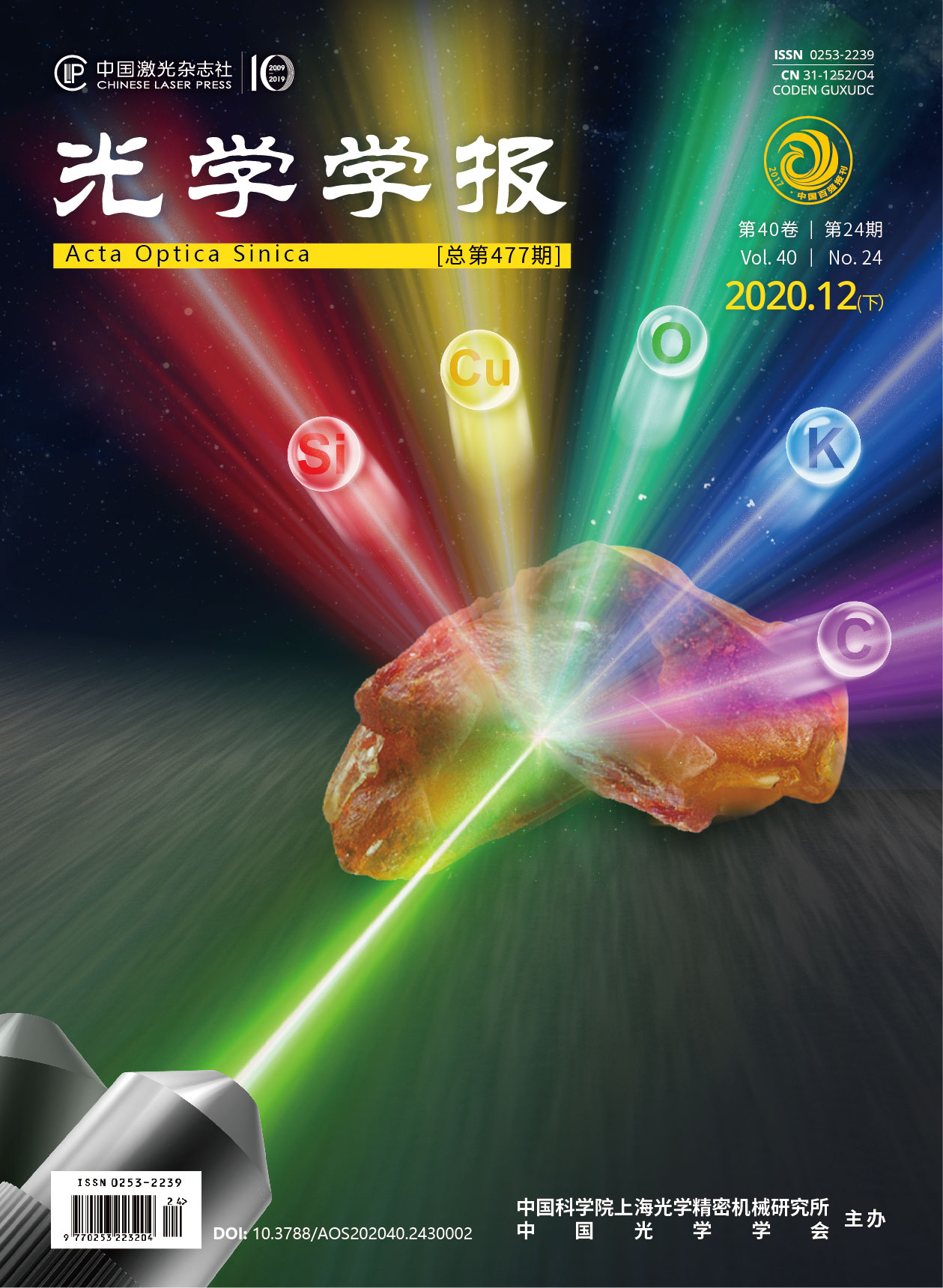结合深度卷积神经网络与影像学特征的肺结节良恶性鉴别方法  下载: 1338次
下载: 1338次
高大川, 聂生东. 结合深度卷积神经网络与影像学特征的肺结节良恶性鉴别方法[J]. 光学学报, 2020, 40(24): 2410002.
Dachuan Gao, Shengdong Nie. Method for Identifying Benign and Malignant Pulmonary Nodules Combing Deep Convolutional Neural Network and Hand-Crafted Features[J]. Acta Optica Sinica, 2020, 40(24): 2410002.
[1] Torre L A, Siegel R L, Ward E M, et al. Global cancer incidence and mortality rates and trends: an update[J]. Cancer Epidemiology, Biomarkers & Prevention, 2016, 25(1): 16-27.
[2] Chen W Q, Zheng R S, Baade P D, et al. Cancer statistics in China, 2015[J]. CA: A Cancer Journal for Clinicians, 2016, 66(2): 115-132.
[3] 于红, 刘士远, 李惠民, 等. 影像学检查技术在肺癌诊断中的应用[J]. 诊断学理论与实践, 2010, 9(2): 124-128.
[4] 冯雨, 易本顺, 吴晨玥, 等. 基于三维卷积神经网络的肺结节识别研究[J]. 光学学报, 2019, 39(6): 0615006.
[5] Renfrew D L, Franken E A, Berbaum K S, et al. Error in radiology: classification and lessons in 182 cases presented at a problem case conference[J]. Radiology, 1992, 183(1): 145-150.
[6] Zia ur Rehman M, Javaid M, Shah S I A, et al. An appraisal of nodules detection techniques for lung cancer in CT images[J]. Biomedical Signal Processing and Control, 2018, 41: 140-151.
[7] Firmino M, Morais A H, Mendoça R M, et al. Computer-aided detection system for lung cancer in computed tomography scans: review and future prospects[J]. BioMedical Engineering OnLine, 2014, 13(1): 41.
[8] Dhara A K, Mukhopadhyay S, Dutta A, et al. A combination of shape and texture features for classification of pulmonary nodules in lung CT images[J]. Journal of Digital Imaging, 2016, 29(4): 466-475.
[9] Kaya A, Can A B. A weighted rule based method for predicting malignancy of pulmonary nodules by nodule characteristics[J]. Journal of Biomedical Informatics, 2015, 56: 69-79.
[10] Nibali A, He Z, Wollersheim D. Pulmonary nodule classification with deep residual networks[J]. International Journal of Computer Assisted Radiology and Surgery, 2017, 12(10): 1799-1808.
[11] Shen W, Zhou M, Yang F, et al. Multi-crop convolutional neural networks for lung nodule malignancy suspiciousness classification[J]. Pattern Recognition, 2017, 61: 663-673.
[13] Manos D, Seely J M, Taylor J, et al. The lung reporting and data system (LU-RADS): a proposal for computed tomography screening[J]. Canadian Association of Radiologists Journal, 2014, 65(2): 121-134.
[14] Ochs R, Kim H J, Angel E, et al. Forming a reference standard from LIDC data: impact of reader agreement on reported CAD performance[J]. Proceedings of SPIE, 2007, 6514: 65142A.
[15] McWilliams A, Tammemagi M C, Mayo J R, et al. Probability of cancer in pulmonary nodules detected on first screening CT[J]. The New England Journal of Medicine, 2013, 369(10): 910-919.
[16] Snoeckx A, Reyntiens P, Desbuquoit D, et al. Evaluation of the solitary pulmonary nodule: size matters, but do not ignore the power of morphology[J]. Insights into Imaging, 2018, 9(1): 73-86.
[17] Zhou Z G, Folkert M, Iyengar P, et al. Multi-objective radiomics model for predicting distant failure in lung SBRT[J]. Physics in Medicine and Biology, 2017, 62(11): 4460-4478.
[18] 杨军, 王顺, 周鹏. 基于深度体素卷积神经网络的三维模型识别分类[J]. 光学学报, 2019, 39(4): 0415007.
[19] SzegedyC, IoffeS, VanhouckeV, et al., Inception-ResNet and the impact of residual connections on learning[EB/OL]. ( 2016-08-23)[2020-07-12]. https:∥arxiv.org/abs/1602. 07261.
[20] Kingma DP, Ba J. Adam: a method for stochastic optimization[EB/OL]. ( 2017-01-30)[2020-07-12]. https:∥arxiv.org/abs/1412. 6980.
[21] Díaz-Uriarte R, de Andrés S A. Gene selection and classification of microarray data using random forest[J]. BMC Bioinformatics, 2006, 7: 3.
[22] Fawcett T. An introduction to ROC analysis[J]. Pattern Recognition Letters, 2006, 27(8): 861-874.
[23] HuangG, Liu Z, van der Maaten L, et al. Densely connected convolutional networks[C]∥2017 IEEE Conference on Computer Vision and Pattern Recognition (CVPR), July 21-26, 2017, Honolulu, HI, USA.New York: IEEE Press, 2017: 2261- 2269.
[24] He KM, Zhang XY, Ren SQ, et al.Deep residual learning for image recognition[C]∥2016 IEEE Conference on Computer Vision and Pattern Recognition (CVPR), June 27-30, 2016, Las Vegas, NV, USA.New York: IEEE Press, 2016: 770- 778.
[25] 黄盛, 李菲菲, 陈虬. 基于改进深度残差网络的计算断层扫描图像分类算法[J]. 光学学报, 2020, 40(3): 0310002.
[26] Causey JL, Zhang JY, MaS, et al. Highly accurate model for prediction of lung nodule malignancy with CT scans[J]. Scientific Reports, 8( 1): 9286.
[27] Li S L, Xu P P, Li B, et al. Predicting lung nodule malignancies by combining deep convolutional neural network and handcrafted features[J]. Physics in Medicine and Biology, 2019, 64(17): 175012.
高大川, 聂生东. 结合深度卷积神经网络与影像学特征的肺结节良恶性鉴别方法[J]. 光学学报, 2020, 40(24): 2410002. Dachuan Gao, Shengdong Nie. Method for Identifying Benign and Malignant Pulmonary Nodules Combing Deep Convolutional Neural Network and Hand-Crafted Features[J]. Acta Optica Sinica, 2020, 40(24): 2410002.






